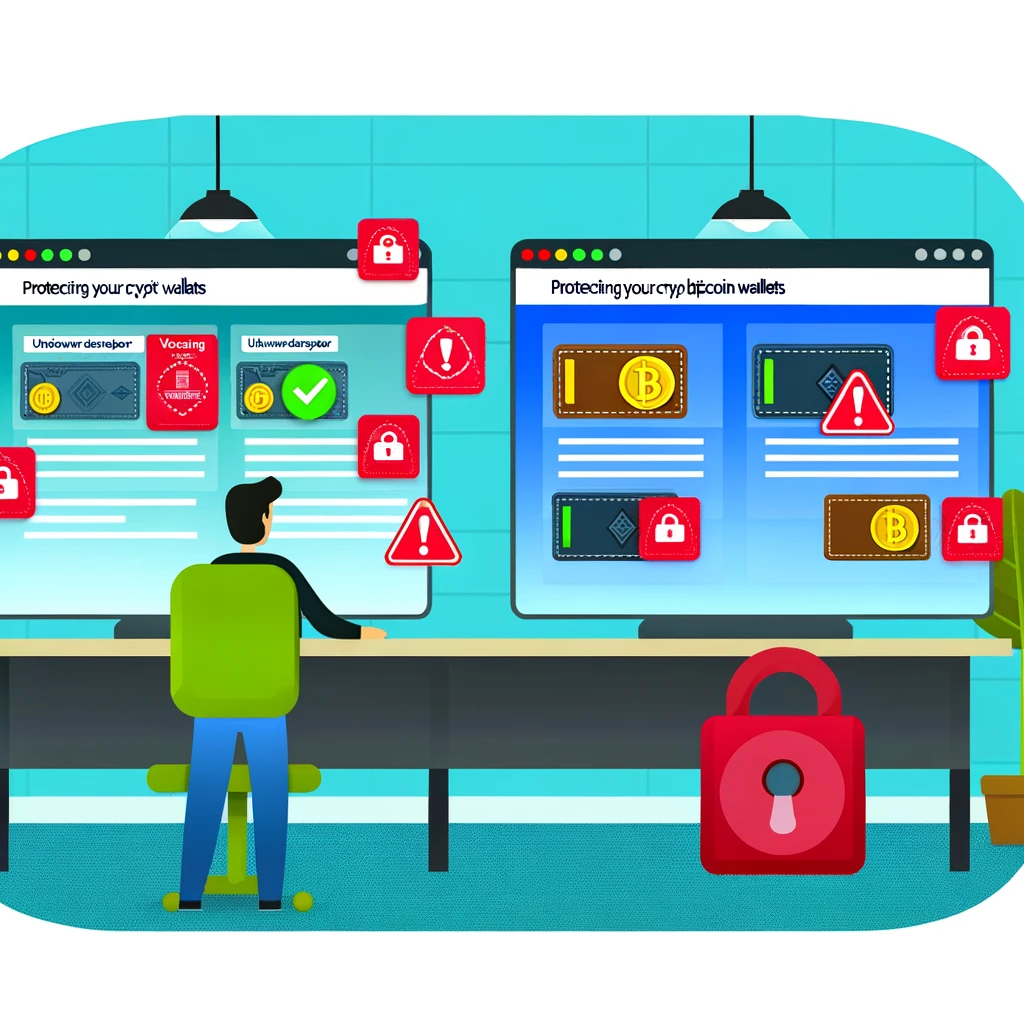
The world of cryptocurrency, particularly Bitcoin, presents a landscape of vast financial opportunities coupled with significant risks. One such risk is the emergence of fraudulent Bitcoin wallets. These are deceptive tools designed to exploit users’ trust, leading to financial loss. This analysis will explore how fraudulent Bitcoin wallets operate, their impact on users, and what measures can be taken to avoid falling victim to these scams.
A fraudulent Bitcoin wallet is essentially a software application that mimics a legitimate wallet, which is used to store, send, and receive Bitcoin and other cryptocurrencies. These wallets aim to deceive users into depositing cryptocurrencies with promises of security, convenience, or rewards, only for the operators to steal the funds.
Fraudulent wallets often make their way to users through various channels: phishing emails, fake advertisements, or even through seemingly legitimate app stores. Developers of these wallets may copy the user interface of reputable wallets to make them appear genuine or create entirely new wallets boasting enhanced features to lure users. Once installed, these wallets can manipulate address information to redirect funds to criminals, exploit security flaws to steal keys, or simply fail to secure user data, leading to theft.


1. Lack of Security Features: Genuine wallets prioritize security and often have features like two-factor authentication and multi-signature support. If these are absent, it’s a red flag.
2. Anonymity of Developers: Reputable wallets usually have a transparent development process with known developers. If the wallet’s creators are unverifiable, caution is advised.
3. Promises of High Returns: Any wallet advertising guaranteed returns or benefits for transferring your Bitcoin should be scrutinized, as these are common tactics in financial scams.
4. Poor Reviews and Feedback: Checking community feedback on forums like Reddit, BitcoinTalk, or even app review sections can reveal insights into the wallet’s legitimacy.
5. Unusual Requests: If a wallet asks for unnecessary permissions or personal information that a typical wallet wouldn’t need, this could indicate malicious intent.
The consequences of using a fraudulent wallet can be severe. Users may lose all the funds deposited into these wallets, which is particularly damaging given the high value of Bitcoin. Beyond financial loss, victims may also suffer data breaches leading to further security complications.
1. Do Thorough Research: Before downloading or using any wallet, conduct extensive research. Verify the wallet’s credibility through reviews, user testimonials, and cryptocurrency forums.
2. Download from Official Sources: Always download wallets directly from the official website or from reputable app stores that perform security checks on applications.
3. Use Established Wallets: Opt for wallets with a strong reputation and a long history within the cryptocurrency community.
4. Look for Open Source: Wallets that are open source allow their code to be examined by anyone, which increases transparency and security.
5. Keep Software Updated: Regular updates are crucial to security. They ensure that the wallet is safeguarded against recent threats.
6. Educate Yourself About Cryptocurrency Security: Understanding the basics of cryptocurrency security, like the importance of private keys and how to keep them secure, is fundamental.
The rise of fraudulent Bitcoin wallets is a significant concern in the cryptocurrency space, particularly as more individuals and institutions adopt Bitcoin. Awareness and education are key in combating these scams. By taking proactive measures to verify the legitimacy of Bitcoin wallets and practicing good digital security hygiene, users can protect themselves against these deceitful tactics. In the rapidly evolving world of cryptocurrencies, being informed and cautious is more important than ever.
Cover illustration for a guide on Blockchain and Cryptocurrency scams, symbolizing the dangers and traps in the crypto world.
Two educational illustrations for the guide titled “Protecting Your Crypto: How to Spot and Avoid Fraudulent Bitcoin Wallets”.